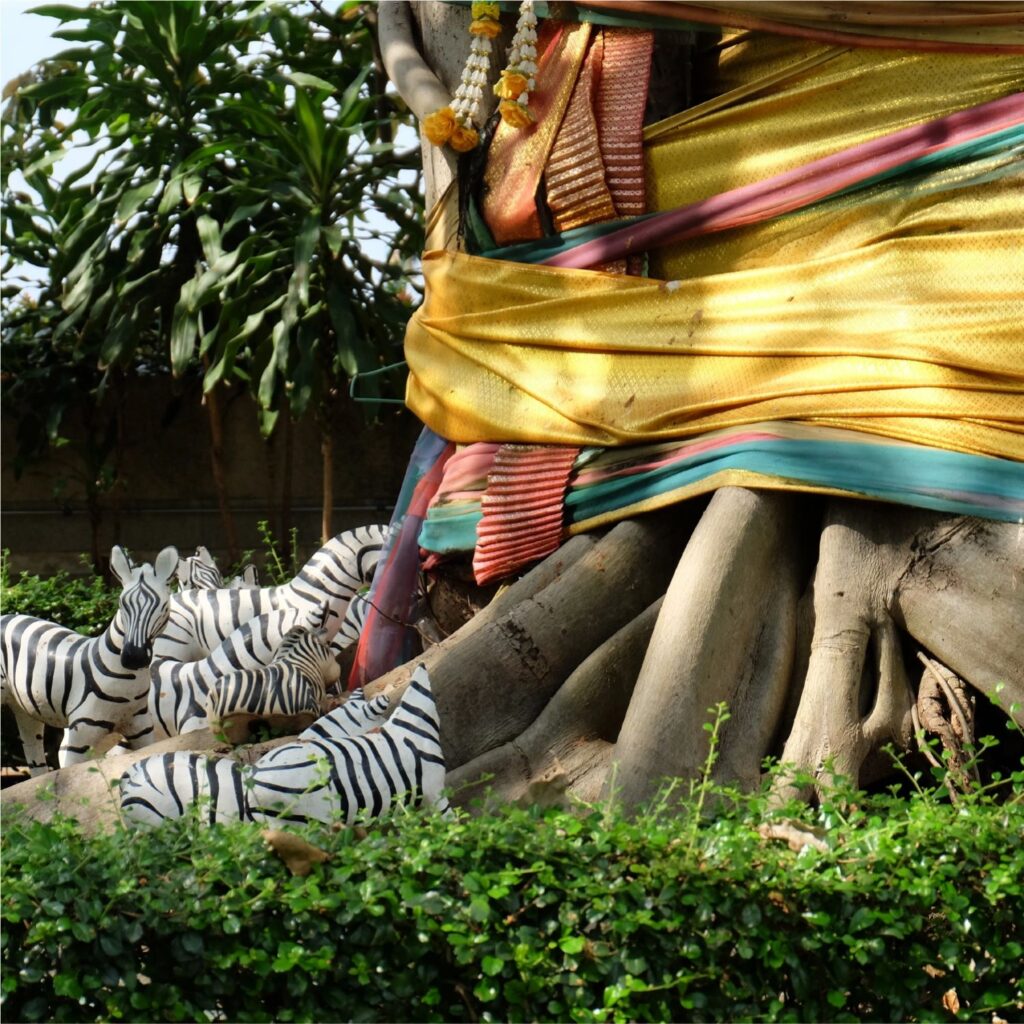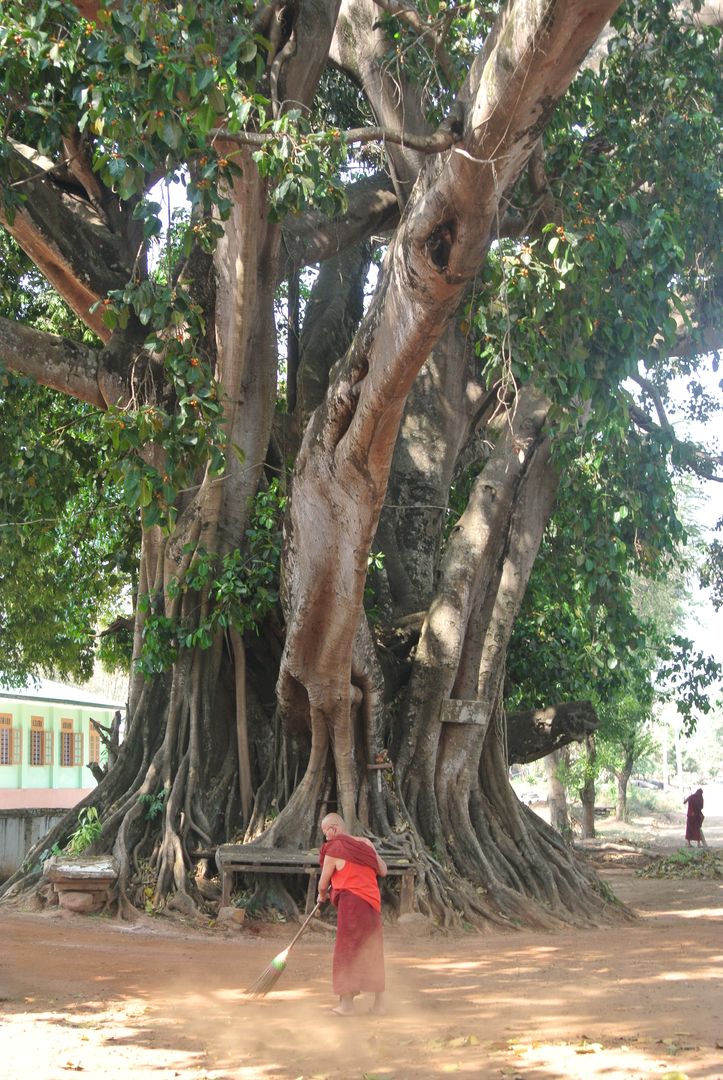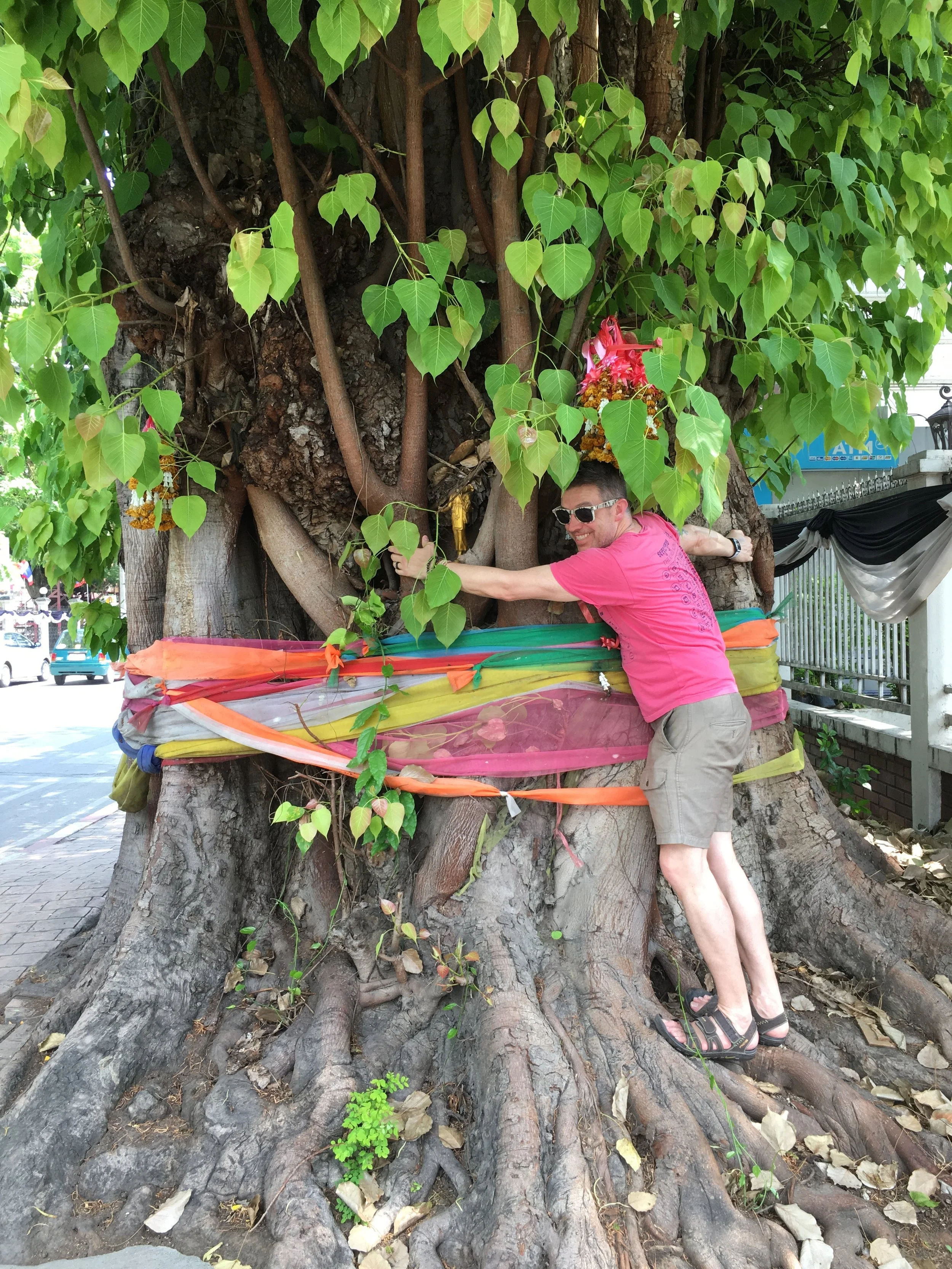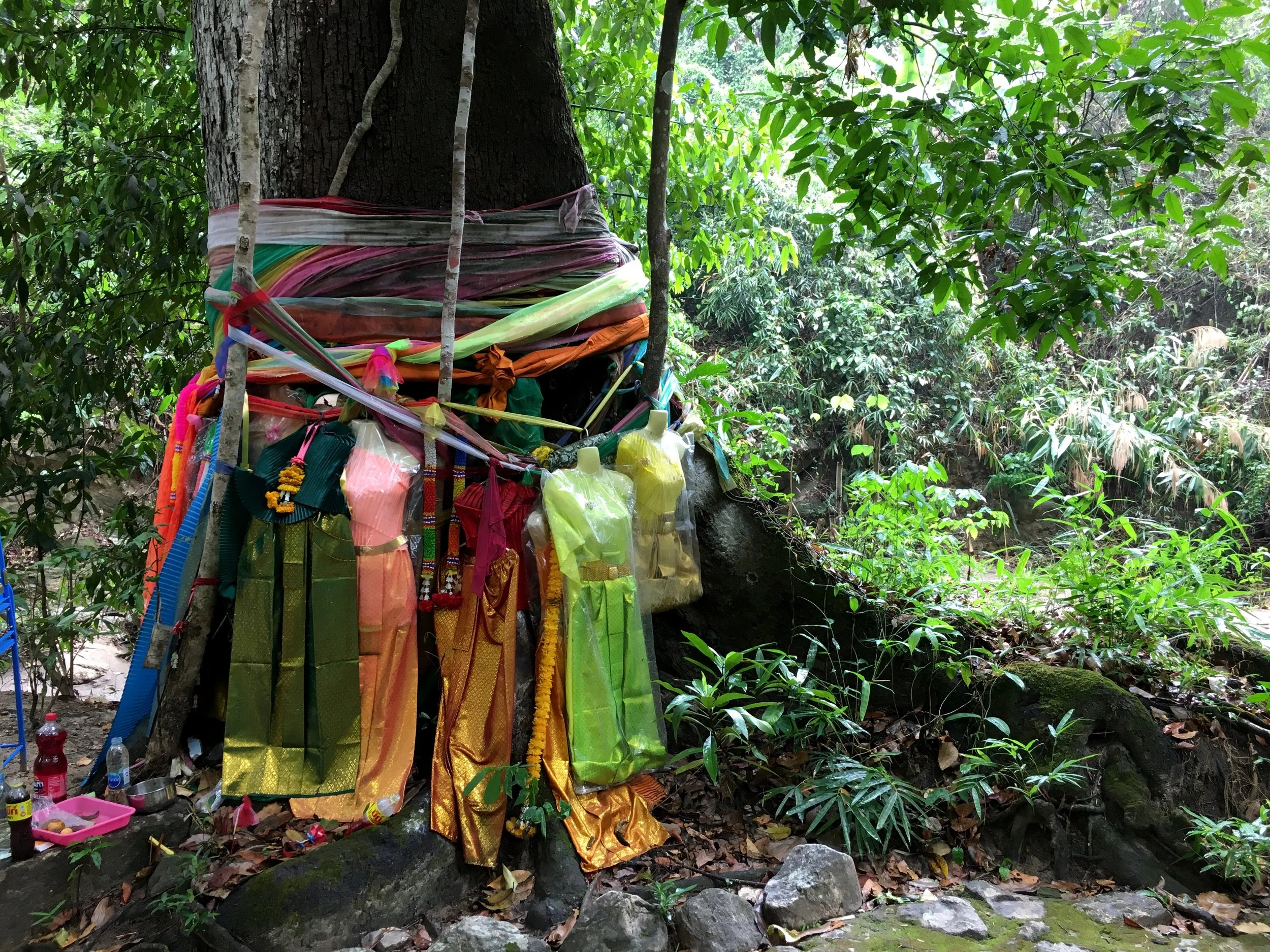Thailand’s sacred trees hold a deep cultural significance that goes beyond their natural beauty. These majestic giants are not just objects of admiration for tourists, but play a significant role in Thai culture and spirituality. These trees are believed to be inhabited by spirits and are considered sacred landmarks in various cities across Thailand. From the centuries-old Bodhi tree, which is said to be the place where Buddha attained enlightenment, to the enchanting flamboyant trees that add vibrant colors to Thailand’s landscape, each sacred tree has its own story to tell. Join us as we embark on a journey to explore the cultural importance of Thailand’s sacred trees, unveiling a rich tapestry of traditions, beliefs, and tales that have been passed down through generations.
The Cultural Importance of Thailand’s Sacred Trees
Thailand is a country deeply rooted in tradition and rich cultural heritage. Within this cultural tapestry, sacred trees hold a special place of significance. These majestic trees are not only revered for their natural beauty, but also for the spiritual and symbolic meanings associated with them. From traditional beliefs and practices to environmental conservation, medicinal properties, and artistic inspiration, the cultural importance of Thailand’s sacred trees is multifaceted and far-reaching.
1. Traditional Beliefs and Practices
1.1 Sacred Trees in Thai Folklore and Mythology
In Thai folklore and mythology, sacred trees are believed to be inhabited by nature spirits or deities known as “phi” or “nang mai.” These spirits are considered guardians and protectors, bringing fortune and warding off evil. Trees such as the Bodhi tree, associated with the enlightenment of the Buddha, and the Chompoo Phet tree, believed to have the power to grant wishes, hold particular importance in Thai culture. These mythical tales passed down through generations have instilled a deep reverence for sacred trees in Thai society.
1.2 Rituals and Offerings to Sacred Trees
Rituals and offerings play a prominent role in Thai culture, and sacred trees are not exempt from these practices. People often visit sacred tree sites to pay respects, make offerings, and seek blessings. Flowers, incense sticks, candles, and cloth strips known as “mai sawan” are commonly used as offerings to seek good luck, prosperity, or protection. These acts of devotion foster a strong sense of community and spiritual connection among Thai people.
1.3 Superstitious Beliefs and Taboos Around Sacred Trees
Superstitious beliefs and taboos are deeply ingrained in Thai culture, and sacred trees are not exempt from these practices. It is widely believed that harming or disrespecting sacred trees can bring about bad luck or misfortune. Many people avoid cutting down or even touching these trees, fearing the wrath of the nature spirits or deities that reside within them. These beliefs have contributed to the preservation and protection of Thailand’s sacred trees.
2. Sacred Trees in Buddhism
2.1 Buddhist Concepts and Symbolism Associated with Trees
Buddhism, being the dominant religion in Thailand, has also influenced the cultural importance of sacred trees. Trees hold great significance in Buddhist teachings, symbolizing growth, wisdom, and enlightenment. The Bodhi tree under which the Buddha attained enlightenment serves as a powerful symbol of spiritual awakening. In Buddhist art and iconography, the depiction of trees is often seen as a representation of the Buddha’s teachings and the cycle of life.
2.2 Temples and Monasteries with Sacred Trees
Temples and monasteries in Thailand often embrace the presence of sacred trees within their compounds. These trees provide shade for meditation and contemplation, enhancing the ambience of tranquility. The ancient temples of Thailand, such as Wat Phra That Doi Suthep and Wat Mahathat, are known for their majestic sacred trees that have stood witness to centuries of devotion and spiritual practice.
2.3 Tree Ordination Ceremonies
Tree ordination ceremonies, known as “Boon Phra” or “Chor Phra,” are unique practices in Thai Buddhism. During these ceremonies, individuals temporarily ordain as monks and embrace the life of a forest dweller by living in trees, meditating, and renouncing worldly distractions. This practice not only fosters a deep connection with nature but also serves as an act of merit-making and a means to cultivate spiritual growth.
3. Environmental Conservation and Tree Preservation
3.1 Government Initiatives for Tree Conservation
Recognizing the ecological importance of trees, the Thai government has implemented various initiatives to conserve and preserve sacred trees. The Royal Forest Department is responsible for tree conservation efforts, including legal protection and enforcement of regulations against deforestation and illegal logging. Tree planting campaigns and reforestation projects are also undertaken to restore and expand forest cover in the country.
3.2 Sacred Trees as Natural Heritage Sites
Many sacred trees in Thailand have been designated as natural heritage sites, safeguarding them from destruction or misuse. These sites serve as protected areas that promote biodiversity conservation and maintain the cultural value associated with the trees. By preserving these sacred trees, Thailand honors its natural heritage and ensures their continuation for future generations.
3.3 Community Efforts and Tree Planting Projects
Engaging local communities in tree preservation and planting projects is crucial for sustainable environmental conservation. In Thailand, community-led efforts have emerged to protect and restore sacred trees. Villages and organizations collaborate to raise awareness, organize tree planting activities, and develop ecotourism initiatives centered around the cultural significance of sacred trees. These community-driven projects provide economic opportunities while nurturing a sense of pride in cultural heritage and environmental stewardship.
4. Medicinal and Healing Properties of Sacred Trees
4.1 Traditional Medicine and Herbal Remedies
Traditional medicine is deeply ingrained in Thai culture, and many sacred trees play a vital role in herbal remedies. Various parts of sacred trees, such as leaves, barks, fruits, and roots, are used in traditional medicine to treat ailments and promote well-being. The knowledge of traditional medicine has been passed down through generations, and the healing properties of sacred trees continue to be valued in Thai society.
4.2 Tree Species with Healing Properties
Thailand’s diverse flora is home to numerous tree species known for their medicinal properties. The Neem tree, for instance, is esteemed for its antibacterial and antifungal properties, while the Tamarind tree is used for its digestive and anti-inflammatory benefits. From the soothing fragrance of the Frangipani tree to the healing properties of the Camphor tree, sacred trees have become reservoirs of natural remedies in Thai traditional medicine.
4.3 Traditional Healing Practices Involving Sacred Trees
In addition to herbal medicine, sacred trees are also associated with traditional healing practices in Thailand. Forest bathing, also known as “Dok Mai Thai Yaa” or “flower tree therapy,” involves spending time in nature and absorbing the healing energy of sacred trees. Traditional healers, known as “mor pee,” may incorporate various rituals and ceremonies involving sacred trees to restore balance and promote holistic well-being.
5. Art and Craft Inspired by Sacred Trees
5.1 Woodcarving Traditions
Sacred trees have long served as inspirations for Thailand’s woodcarving traditions. Skilled artisans carve intricate designs and motifs depicting sacred trees on various wooden objects, such as furniture, decorative panels, and sculptures. Woodcarving is not only a form of artistic expression but also a way to pay homage to the cultural significance of sacred trees.
5.2 Traditional Thai Architecture and Design Influenced by Trees
The influence of sacred trees can be seen in traditional Thai architecture and design. The distinctive curved roofs and intricate woodwork in temples and palaces often draw inspiration from the graceful forms and branches of trees. Whether it’s the lotus-shaped decorative elements or the intricate foliage patterns, these architectural features serve as reminders of the enduring connection between Thai culture and sacred trees.
5.3 Traditional Thai Paintings and Depictions of Sacred Trees
Traditional Thai paintings, such as the renowned mural paintings in temples, often depict scenes with sacred trees. These intricate artworks capture the beauty and symbolism of the trees, simultaneously conveying narratives from Thai folklore, mythology, and religious tales. The vibrant colors and detailed brushwork in these paintings bring the sacredness of trees to life on canvas, preserving the cultural significance for generations to come.
6. Sacred Trees as Tourist Attractions
6.1 Famous Sacred Trees in Different Regions
Thailand’s sacred trees have become significant tourist attractions, drawing visitors from around the world. In Chiang Mai, the Doi Suthep-Pui National Park is famous for its “Naga tree” believed to grant wishes, while the ancient city of Ayutthaya boasts the “Bodhi tree” with its historical and religious significance. From the “Monkey Pod tree” in Koh Samui to the “King Rama IV tree” in Bangkok, each region offers unique encounters with sacred trees.
6.2 Tree-Related Festivals and Events
Tree-related festivals and events celebrate the cultural importance of sacred trees in Thailand. The annual “Tak Bat Devo” ceremony in Chiang Mai involves offering food to monks under sacred trees as a way to earn merit. The “Lamphun Tree Festival” showcases the botanical diversity and cultural heritage of the province. These festivities not only attract tourists but also serve as platforms for cultural exchange and appreciation.
6.3 Ecotourism and Nature Exploration
Thailand’s sacred trees have played a significant role in promoting ecotourism and nature exploration. National parks and nature reserves, such as Doi Inthanon National Park and Khao Yai National Park, offer opportunities for visitors to immerse themselves in the natural beauty and cultural significance of sacred trees. Guided tours, hiking trails, and educational programs provide insights into the ecological and cultural importance of these sacred sites.
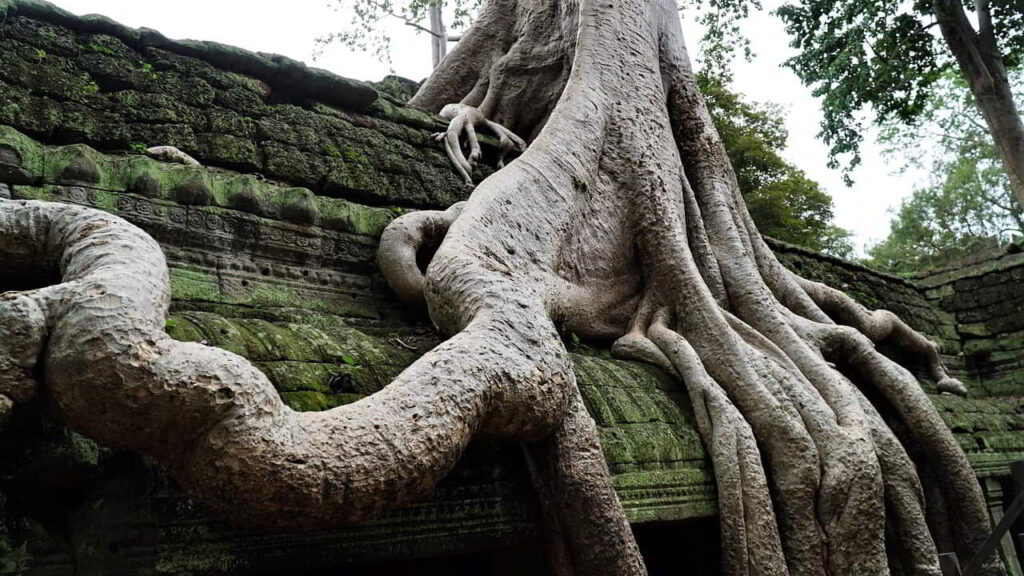
7. Economic Impact of Sacred Trees
7.1 Tree-Related Tourism and Local Economy
Sacred trees contribute to the economic growth of local communities through tree-related tourism. Tourists visiting sacred tree sites generate revenue for local businesses, including accommodations, restaurants, souvenir shops, and transportation services. These economic opportunities provide livelihoods for communities and incentivize the preservation and sustainable management of sacred trees.
7.2 Tree Products as Local Industry
The economic impact of sacred trees extends beyond tourism. Tree products derived from sacred trees, such as essential oils, herbs, and woodwork, contribute to local industries. The production and trade of these products provide employment opportunities and support local economies. However, it is essential to ensure sustainable harvesting practices and resource management to avoid depletion and maintain the cultural significance of sacred trees.
7.3 Sustainable Harvesting and Tree Conservation
Balancing economic benefits with tree conservation is crucial for the sustainability of the cultural importance of sacred trees. Government initiatives, community-driven projects, and collaborations between stakeholders aim to ensure sustainable harvesting practices and promote responsible tourism. By fostering a harmonious relationship between economic development and environmental preservation, Thailand strives to safeguard the cultural legacy of sacred trees.
8. Threats and Challenges to Sacred Trees
8.1 Deforestation and Urbanization
Rapid urbanization and agricultural expansion pose significant threats to Thailand’s sacred trees. Deforestation for infrastructure development, land conversion, and illegal logging disrupts the natural habitats of sacred trees, leading to the loss of biodiversity and cultural heritage. Efforts to address these challenges include widespread awareness campaigns, stricter regulations, and land-use planning that balances development with environmental protection.
8.2 Climate Change and Adaptation
Climate change presents additional challenges to the survival of sacred trees. Rising temperatures, changing rainfall patterns, and increased frequency of extreme weather events pose threats to the health and resilience of these trees. Adaptation strategies, such as afforestation, reforestation, and sustainable water management, are crucial for mitigating the impact of climate change and ensuring the longevity of sacred trees.
8.3 Illegal Logging and Wildlife Trade
Illegal logging and the wildlife trade contribute to the decline of sacred trees. Unregulated logging activities exploit valuable timber resources, endangering sacred trees and the ecosystems they support. Similarly, the wildlife trade poses risks to the biodiversity associated with sacred tree sites. Strengthening law enforcement efforts, enhancing surveillance, and promoting responsible trading practices are necessary to combat these threats effectively.
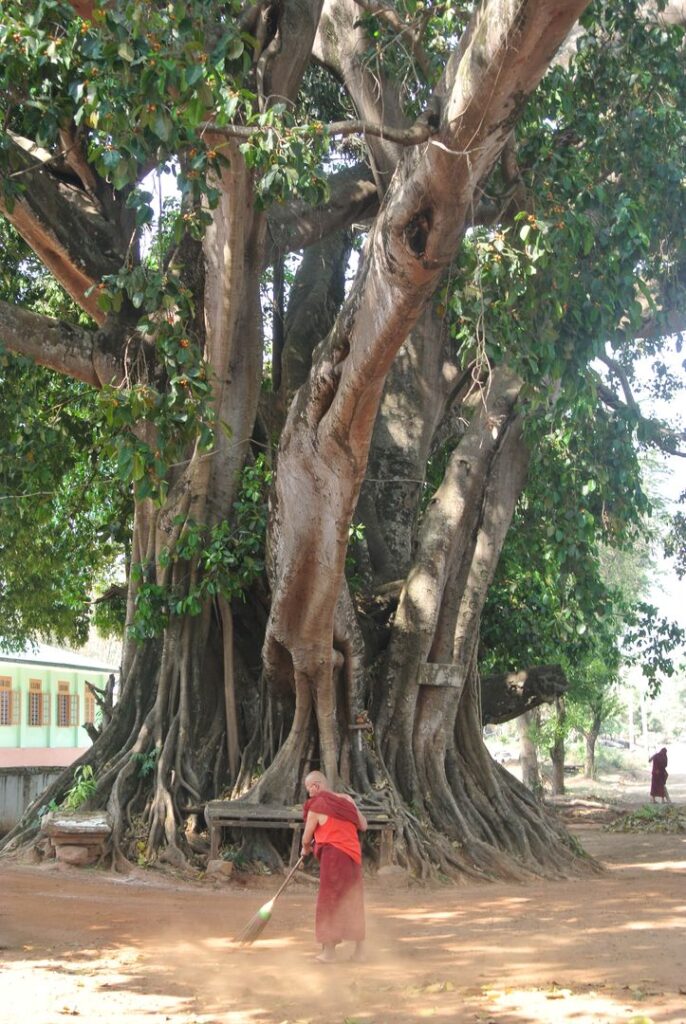
9. Education and Awareness Programs
9.1 Tree Conservation Education in Schools
Educational initiatives play a vital role in raising awareness about the cultural importance of sacred trees among future generations. Integrating tree conservation education into school curricula fosters environmental consciousness and instills a sense of responsibility in young minds. Students learn about the ecological significance, cultural values, and sustainable practices associated with sacred trees, ensuring the preservation of these cultural treasures.
9.2 Public Campaigns for Tree Preservation
Public awareness campaigns serve as catalysts for tree preservation efforts. Through media campaigns, workshops, and community engagement programs, individuals are encouraged to recognize the cultural significance of sacred trees and actively participate in their conservation. By promoting a sense of ownership and shared responsibility, these campaigns seek to mobilize public support for sustainable practices and the protection of sacred trees.
9.3 Importance of Cultural Knowledge and Traditions
Preserving and passing on cultural knowledge and traditions related to sacred trees is essential for their continued significance. Traditional practices, stories, and beliefs associated with sacred trees should be documented, shared, and integrated into educational programs. By valuing and promoting cultural heritage, Thailand can ensure that the spiritual, ecological, and economic contributions of sacred trees continue to enrich its society.
10. Future Prospects and Sustainability
10.1 Innovations and Technology for Tree Conservation
Advancements in technology offer promising opportunities for the conservation of sacred trees. Remote sensing, geographic information systems (GIS), and citizen science initiatives enable effective monitoring and mapping of sacred tree populations. Innovations in sustainable forest management techniques, such as tree propagation and silviculture practices, also contribute to the protection and sustainable utilization of sacred trees.
10.2 Collaboration between Government, NGOs, and Local Communities
Collaborative efforts between the government, non-governmental organizations (NGOs), and local communities are crucial for ensuring the sustainability of the cultural importance of sacred trees. By pooling resources, sharing knowledge, and fostering partnerships, stakeholders can strengthen conservation efforts, promote sustainable tourism, and implement effective policies that protect sacred trees from threats and support local communities.
10.3 Balancing Cultural Significance and Modern Development
As Thailand continues to develop, striking a balance between preserving the cultural significance of sacred trees and pursuing modernization is vital. Comprehensive land-use planning, incorporating environmental impact assessments, and promoting sustainable development practices are necessary to protect sacred tree sites and maintain their cultural, ecological, and economic values in the face of advancing urbanization and industrialization.
In conclusion, Thailand’s sacred trees hold immense cultural significance that transcends time and borders. From traditional beliefs and rituals to artistic inspiration, economic endeavors, and environmental preservation, the cultural importance of sacred trees weaves a tapestry that reflects the deep-rooted connection between Thai society, nature, and spirituality. With ongoing efforts in conservation, awareness, and collaboration, Thailand strives to ensure the continuity of its sacred trees for generations to come.
